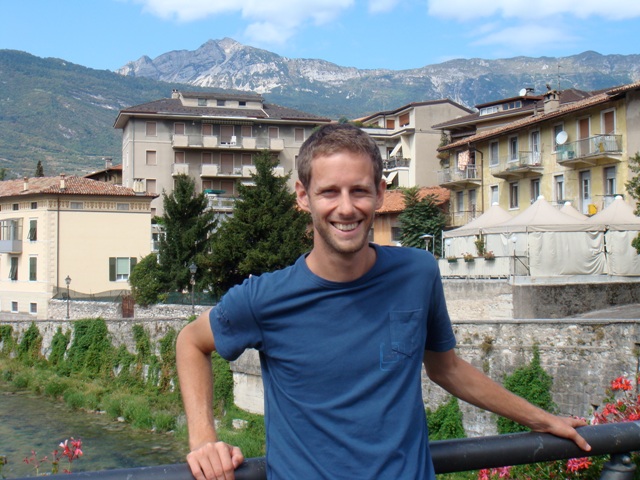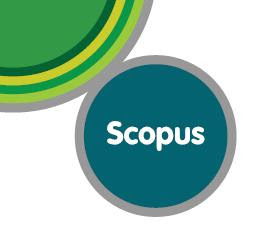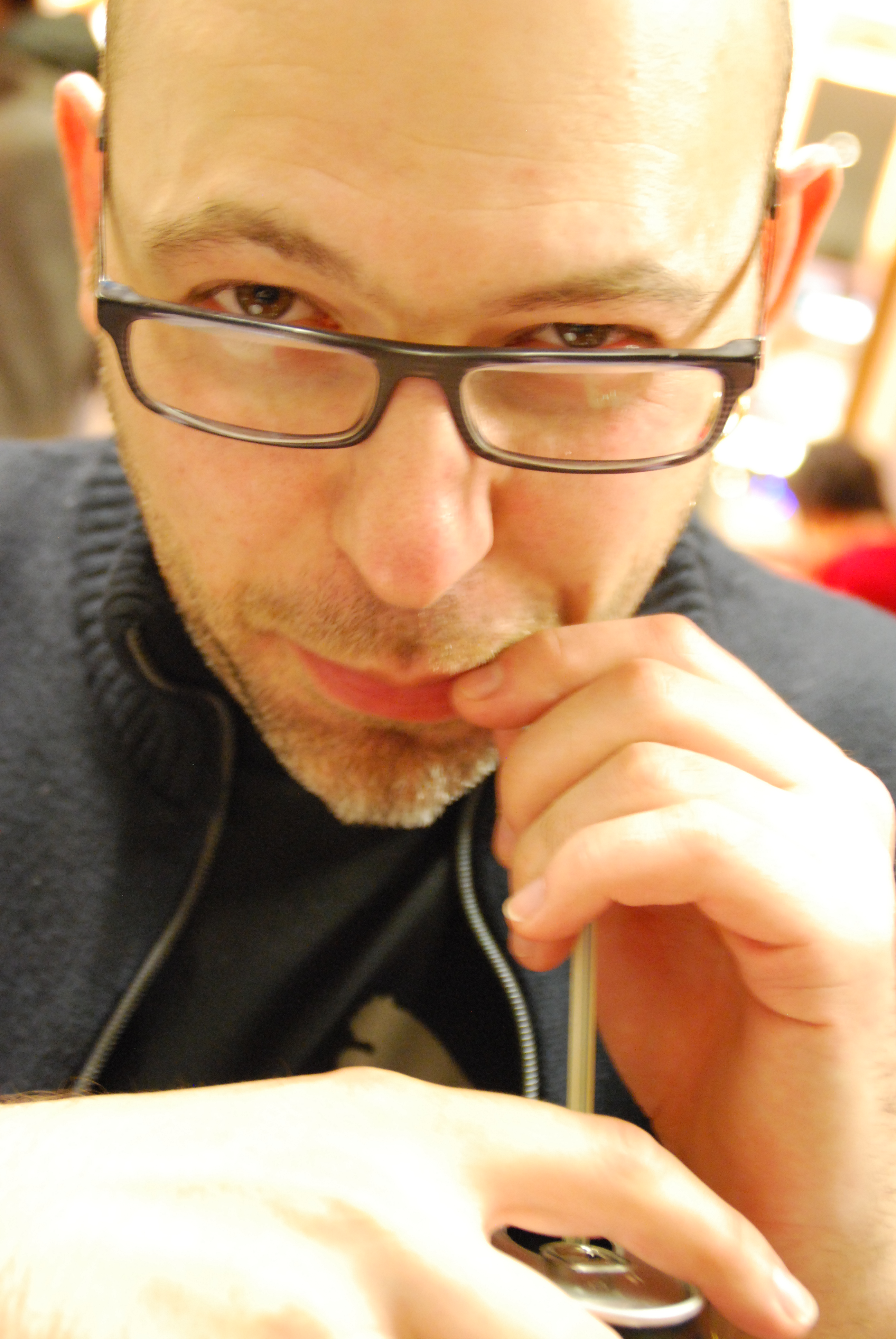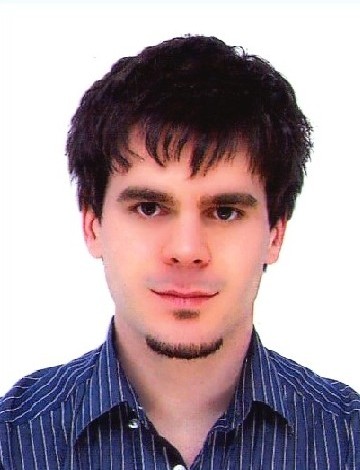Members
ipsy |
"Numerical Development" Lab

Marie-Pascale NOEL
Principal Investigator - FNRS Senior Research Associate
more about Marie-Pascale Noël

Virginie CROLLEN
Pricipal Investigator - Professor
"Numerical Cognition in Adults" Lab |
Principal Investigator Senior Research Associate more about Mauro Pesenti Contact info: 10, place Cardinal Mercier +32 (0)10 47 88 22 Research InterestsMy research projects aim at defining the functional components of calculation and number processing and at finding their neuroanatomical correlates. My work is carried out in three directions using different but complementary methodologies: the study of cerebral activations with functional imaging techniques, the study of brain-damaged patients performance, and mental chronometric studies in healthy adults. Integrating the functional and neuroanatomical levels of analysis in the same theoretical questioning seems to me essential to further our understanding of cognitive processes and to improve the validity of current models of numerical cognition. In the last years, I have been funded by grants from the National Fund for Scientific Research (Belgium), the Fonds de Developpement Scientifique (UCLouvain), and the PAI/IUAP Program from the Belgian Government. Some representative publicationsFor a complete list: click here. ARTICLES: Pesenti, M., Seron, X., & Van der Linden, M. (1994). Selective impairment as evidence for mental organisation of arithmetical facts: BB, a case of preserved subtraction? Cortex, 30, 661-671. Pesenti, M., Thioux, M., Seron, X., & De Volder, A. (2000). Neuroanatomical substrate of Arabic number processing, numerical comparison and simple addition: A PET study. Journal of Cognitive Neuroscience, 12 (3), 461-479. Pesenti, M., Zago, L. Crivello, F., Mellet, E., Samson, D., Duroux, B., Seron, X., Mazoyer, B., & Tzourio-Mazoyer, N. (2001). Mental calculation in a prodigy is sustained by right prefrontal and medial-temporal areas. Nature Neuroscience, 4 (1), 103-107. Andres, M., Di Luca, S., & Pesenti, M. (2008). Finger counting: The missing tool? Behavioral and Brain Sciences, 31, 642-643. Di Luca, S., & Pesenti, M. (2008). Masked priming effect with canonical finger numeral configurations. Experimental Brain Research, 185(1), 27–39. Dormal, V., & Pesenti, M. (2009). Common and specific contributions of the intraparietal sulci to numerosity and length processing. Human Brain Mapping, 30(8), 2466-2476. Pesenti, M., & Andres, M. (2009). Common mistakes about numerical representations. Behavioral and Brain Sciences, 32 (3-4), 346-347. Badets, A., & Pesenti, M. (2010). Creating number semantics through finger movement perception. Cognition, 115, 46-53. Andres, M., Michaux, N., & Pesenti, M. (2012). Common substrate for mental arithmetic and finger representation in the parietal cortex. NeuroImage, 62, 1520-1528. Di Luca, S., Pesenti, M., Vallar, G., & Girelli, L. (2013). Numbers reorient visuo-spatial attention during cancellation tasks. Experimental Brain Research, 225, 549-557. Dormal, V., Javadi, A.H., Andres, M., Pesenti, M., Walsh, V., & Cappelletti, M. (2016). Enhancing duration discrimination with parietal transcranial Random Noise Stimulation (tRNS), Neuropsychologia, 85, 272-277. Masson, N., Letesson, C., & Pesenti, M. (2018). Time course of overt attentional shifts in mental arithmetic: evidence from gaze metrics. Quarterly Journal of Experimental Psychology, 71(4), 1009-1019. Masson, N., & Pesenti M. (2023). A functional role for oculomotor preparation in mental arithmetic evidenced by the abducted-eye paradigm. Psychological Research, 87, 919-928. BOOKS and CHAPTERS: Pesenti, M., & Seron, X. (Eds.), (2000). Neuropsychologie des troubles du calcul et du traitement des nombres. Marseille: Editions Solal, p. 273. Pesenti, M., & Seron, X. (Eds.), (2004). La cognition numérique. Paris: Lavoisier-Hermès Science Editions, p. 287. Pesenti, M. (2005). Calculation abilities in expert calculators. In J.I.D. Campbell (Ed.) Handbook of Mathematical Cognition. Psychology Press, pp. 413-430. Andres, M., & Pesenti, M. (2014). Finger-based representation of mental arithmetic. In R. Cohen Kadosh & A. Dowkers (Eds.) Oxford Handbook of Mathematical Cognition. Pesenti, M., & Van Calster, L. (2024). Les acalculies. In M. Villain & A. Lafay (Eds.) Troubles de la cognition mathématique – De la compréhension aux interventions. Paris : De Boeck Supérieur. Teaching chargesFor a complete list: click here. POUR LES ETUDIANT·E·S DE MASTER - Stages et mémoires sous ma directionLes étudiant·e·s de masters en Sciences Psychologiques ou en Logopédie de l'UCLouvain intéressé·e·s par la réalisation d'un stage ou d'un mémoire sous ma direction et/ou celle d'un·e membre de mon groupe trouveront: - des informations sur les thématiques de recherche du groupe en cliquant ici; - des exemples de stages et mémoires en cours ou récemment terminés en cliquant ici. Pour plus d'informations, je les invite à prendre contact avec moi ou un·e membre du groupe. | Principal Investigator Research Associate more about Michael Andres Contact info: 10, place Cardinal Mercier +32 (0)10 47 38 20 Research Interests : My master degree was in Neuropsychology at the Université catholique de Louvain (UCL, Belgium). I did my last year dissertation with Xavier Seron and Aliette Lochy on the switching between Arabic and verbal notations during the writing of numbers. I started a doctoral degree with Xavier Seron on the study of hemispheric lateralization of number representation and the influence of finger counting on number representation in adults. My method of choice was transcranial magnetic stimulation (TMS), a technique that I learned with Etienne Olivier in the Laboratory of Neurophysiology (UCL) and with Tomas Paus during a stay at the Montreal Neurological Institute (McGill University, Canada). Using TMS, I confirmed the dominant role of the left parietal cortex in exact number comparison and evidenced increased corticospinal excitability (CSE) in hand motor circuits during serial processing of numbers and letters, suggesting a link between the representation of fingers and ordered series. I also participated to the investigation of the neural representation of simple motor acts, such as grasping, and complex actions like tool use (with Etienne Olivier and Marco Davare). Using electromyographic recordings and kinematic measurements, I collected evidence that number magnitude can interfere with grip aperture, in line with the idea that the representation of numerical and physical magnitudes share common processes (with Arnaud Badets and Samuel Di Luca). I pursued this idea in a number of collaborative projects using functional magnetic resonance imaging (fMRI) and TMS to investigate the functional overlap between number, time and space representations in the parietal cortex (with Mauro Pesenti and Valérie Dormal). During my post-doc, I used dual tasks, fMRI and CSE measurements to specificy the role of motor representations in mental arithmetic (with Mauro Pesenti and Nicolas Michaux) and action verb understanding (with Manuela Piazza). I looked at motor imagery and action understanding in a person with a congenital absence of upper limbs (with Agnesa Pillon and Gilles Vannuscorps) and worked as a fellow researcher at the CIMeC (University of Trento, Italy) where I tried to combine habituation paradigms with fMRI in order to reveal the tuning properties of parietal and frontal regions in response to number or finger change (with Manuela Piazza). More recently, I contributed to the development of a TMS lab at Ghent University (Department of Experimental Psychology, UGent, Belgium) and iniated several projects with Wim Fias and Marcel Brass where we investigate cognitive control processes in stop signal and switching tasks. My goal is to extend current knowledge of control processes to complex cognitive tasks, such as mental arithmetic, with a great interest for the role of the prefrontal cortex as an interface between stimulus-response association in the parietal cortex and response execution in the motor cortex. Some representative publications : 2004 • Pourtois, G., Sander, D., Andres, M., Grandjean, D., Reveret, L., Olivier, E., & Vuilleumier, P. (2004). Dissociable roles of the human somatosensory and superior temporal cortices for processing social face signals. European Journal of Neuroscience, 20, 3507-3515. • Andres, M., Davare, M., Pesenti, M., Olivier, E., & Seron, X. & (2004). Number magnitude and grip aperture interaction. NeuroReport, 15 (18), 2773-2777. 2005 • Andres M., Seron X., & Olivier E. (2005). Hemispheric lateralization of number comparison. Cognitive Brain Research, 25, 283-290. • Pelgrims, B., Andres, M., & Olivier, E. (2005). Motor imagery while judging object-hand interactions. Neuroreport, 16, 1993-1996. 2006 • Davare, M., Andres, M., Cosnard, G., Thonnard, J-L., & Olivier, E. (2006). Dissociating the role of ventral and dorsal premotor cortex in precision grasping. Journal of Neuroscience, 26(8), 2260-2268. 2007 • Andres M., Seron X., & Olivier E. (2007). Contribution of hand motor circuits to counting. Journal of Cognitive Neuroscience, 19(4), 563-576. • Badets, A., Andres, M., Di Luca, S., & Pesenti, M. (2007). Number magnitude potentiates action judgements. Experimental Brain Research, 180 (3), 525-534. • Davare, M., Andres, M., Clerget, E., Thonnard, J-L., & Olivier, E. (2007). Temporal dissociation between hand shaping and grip force scaling in the anterior intraparietal area. Journal of Neuroscience, 27(15), 3974-3980. 2008 • Andres, M., Olivier, E., & Badets, A. (2008). Actions, words and numbers: A motor contribution to semantic processing? Current Directions in Psychological Science, 17, 313-317. • Andres, M., Ostry, D., Nicols, F., & Paus, T. (2008). Time course of number magnitude interference during grasping. Cortex, 44, 414-419. • Olivier, E., Davare, M., Andres, M., & Fadiga, L. (2008). Control of precision grasping in humans. Current Opinion in Neurobiology, 17, 644-648. • Dormal, V., Andres M., & Pesenti, M. (2008). Dissociation of numerosity and duration processing in the left intraparietal sulcus: A transcranial magnetic stimulation study. Cortex, 44 (4), 462-469. • Andres, M., Di Luca, S., & Pesenti, M. (2008). Finger counting: The missing tool? Behavioral and Brain Sciences, 31, 642-643. 2009 • Andres, M., & Pesenti, M. (2009). Common mistakes about numerical representations. Behavioral and Brain Sciences, 32, 346. • Pelgrims, B., Andres, M., & Olivier, E. (2009). Double dissociation between motor and visual imagery in the posterior parietal cortex. Cerebral Cortex, 19, 2298-2307. • Pesenti, M., & Andres, M. (2009). Common mistakes about numerical representations. Commentary on Cohen-Kadosch R. and Walsh V., Behavioral and Brain Sciences, 32, 346-347. 2010 • Michaux, N., Pesenti, M., Badets, A., Di Luca, S., & Andres, M. (2010). Let us redeploy attention to sensorimotor experience. Behavioral and Brain Sciences, 33(4), 283-284. • Dormal, V., Andres, M., Dormal, G., & Pesenti, M. (2010). Mode-dependent and mode-independent representations of numerosity in the right intraparietal sulcus. NeuroImage, 52, 1677-1686. 2011 • Pelgrims, B., Michaux, N., Olivier, E., & Andres, M. (2011). Dissociation between manipulation and conceptual knowledge of object use in the supramarginal gyrus. Human Brain Mapping, 32(11), 1802-1810. • Pelgrims, B., Olivier, E., & Andres, M. (2011). Contribution of the primary motor cortex to motor imagery : A sub-threshold TMS study. Human Brain Mapping, 32(9), 1471-1482. • Andres, M., Pelgrims, B., Michaux, N., Olivier, E., & Pesenti, M. (2011). Role of distinct parietal areas in arithmetic: An fMRI-guided TMS study. NeuroImage, 54(4), 3048-3056. 2012 • Dormal, V., Andres, M., & Pesenti, M. (2012). Contribution of the right intraparietal sulcus to numerosity and length processing: an fMRI-guided TMS study. Cortex, 48(5), 623-629. • Andres, M., Michaux, N., & Pesenti, M. (2012). Common substrate for mental arithmetic and finger representation in the parietal cortex. NeuroImage. in press. Epub ahead of print retrieved June 28, 2012, from http://www.sciencedirect.com/science/article/pii/S1053811912005356 |
Post-doctoral Researcher more about Laurie Geers
Contact info: 10, place Cardinal Mercier +32 (0)10 47 … Research InterestsMy research project aims to test the independence of the processes underlying size estimation for perception and action, and broaden the perspective by considering possible interactions between both. To do this, my project includes two methodological approaches:
In parallel to my own research project, I collaborated to studies on neglect patients testing the hypothesis that current tests for unilateral neglect are not sensitive enough to symptoms persisting in everyday life. Some publications:Geers, L., Pesenti, M., & Andres, M. (2018). Visual illusions modify object size estimates for prospective action judgements. Neuropsychologia, 117, 211-221. Andres, M., Geers, L., Marnette, S., Coyette, F., Bonato, M., Priftis, K., & Masson, N. (2019). Increased cognitive load reveals unilateral neglect and altitudinal extinction in chronic stroke. Journal of the International Neuropsychological Society, 1-9. |
Post-doctoral Researcher more about Nicolas Masson Contact info: Place Cardinal Mercier, 10 +32 (0)10/47 38 39 Research Interests: My research project aims at clarifying the nature of arithmetical processes and their relationship with attention and visuo-spatial attention mechanisms with the contribution of various methodological approaches:
Some representative publications:
|
|
Teaching assistant, PhD student
more about Benjamin Brise
|
Research assistant, PhD student more about Sylvain Gerin Contact info: 10, place Cardinal Mercier
Research interests: I study tactile cognition, with a special focus on fingers. Although it is not my primary interest, some of my projects investigate the link between fingers and numerical cognition.
|
Research assistant, PhD student more about Samuel Lepoittevin Contact info: 10, place Cardinal Mercier |
Post-doctoral Researcher more about Valérie Dormal Contact info: Research Interests : My main interest of research consists in the investigation of magnitude estimation processing (quantity, numerosity, duration, length, etc.). By using behavioral and neuroimaging techniques (fMRI, TMS, ERPs,...), the main aim of our work is to lead to a better understanding of the representational and cerebral organisation of the magnitude system. PhD abstract: Adults, infants and animals process and represent numerosity, time and length and they use these quantitative dimensions to guide learning and behaviour. From a broad range of behavioural, physiological, developmental, lesional and neuroanatomical data on magnitude processing, Walsh (2003) recently proposed the existence of a generalised magnitude system located in the parietal cortex. In a series of behavioural, neurophysiological and neuroimaging studies with healthy adult participants, we assessed the functional interactions between these magnitudes, we isolated the common and specific brain areas underlying their processing, and we tested the causal role played by these areas. Our results demonstrate for the first time in within-participant designs the implication of an area along the right intraparietal sulcus (IPS) commonly activated in numerosity, duration and length processing. However, this common area appears causally involved only in numerosity and length judgements, as demonstrated by transcranial magnetic stimulation studies. Together, our findings support the idea that the IPS holds both a common and partially distinct and specific representations and/or mechanisms for numerosity, time and length processing. Current position: Post-doctoral Researcher in Laboratoray for Experimental Psychopathology (LEP), UCL, Belgium under the supervision of Prof. Pierre Maurage Topic: Emotional and cognitive (attention and executive functions) processes Some representative publications : Articles 1. Dormal, V., Seron, X., & Pesenti, M. (2006). Numerosity-duration interference: A Stroop experiment. Acta Psychologica, 121, 109-124. 2. Dormal, V., & Pesenti, M. (2007). Numerosity-length interference: A Stroop experiment. Experimental Psychology, 54 (4), 289-297. 3. Dormal, V., Andres M., & Pesenti, M. (2008). Dissociation of numerosity and duration processing in the left intraparietal sulcus: A transcranial magnetic stimulation study. Cortex, 44 (4), 462-469. 4. Dormal, V., & Pesenti, M. (2009). Common and specific contributions of the intraparietal sulci to numerosity and length processing. Human Brain Mapping, 30(8), 2466-2476. 5. Dormal, V., Andres, M., Dormal, G., & Pesenti, M. (2010). Mode-dependent and mode-independent representations of numerosity in the right intraparietal sulcus. NeuroImage, 52, 1677-1686. 6. Dormal, V., Dormal, G., Joassin, F., & Pesenti, M. (2012). A common right fronto-parietal network for numerosity and duration processing: An fMRI study. Human Brain Mapping, 33(6), 1490-1501. 7. Dormal, V., Andres, M., & Pesenti, M. (2012). Contribution of the right intraparietal sulcus to numerosity and length processing: an fMRI-guided TMS study. Cortex, 48, 623-629. 8. Dormal, V., Grade, S., Mormont, E., & Pesenti, M. (2012). Dissociation between numerosity and duration processing in aging and early Parkinson's disease. Neuropsychologia, 50, 2365-2370. 9. Dormal, V., & Pesenti, M. (2013). Processing numerosity, length and duration in a three-dimensional Stroop-like task: towards a gradient of processing automaticity? Psychological Research, 77, 116-127. DOI: 10.1007/s00426-012-0414-3 10. Masson, N., Pesenti, M., & Dormal, V. (2013). Spatial bias in symbolic and non-symbolic numerical comparison in neglect. Neuropsychologia, 51(10), 1925-1932. 11. Crollen, V., Grade, S., Pesenti, M., & Dormal, V. (2013). A common metric magnitude system for the perception and production of numerosity, length and duration. Frontiers in Psychology. DOI=10.3389/fpsyg.2013.00449 12. Dormal, V., Schuller, A-M., Nihoul, J., Pesenti, M., & Andres, M. (2014). Causal role of spatial attention in arithmetic problem solving: Evidence from left unilateral neglect. Neuropsychologia, 60, 1-9. 13. Masson, N., Pesenti, M., & Dormal, V. (2016). Duration and numerical estimation in right brain-damaged patients with and without neglect: Lack of support for a mental time line. British Journal of Psychology, 107(3), 467-483. doi: 10.111/bjop.12155 14. Dormal, V., Javadi, A., Pesenti, M., Walsh, V., & Cappelletti, M. (2016). Enhancing duration processing with parietal brain stimulation. Neuropsychologia, 85, 272-277. doi: 10.1016/j.neuropsychologia.2016.03.033 15. Masson, N., Pesenti, M., & Dormal, V. (2016). Impact of optokinetic stimulation on mental arithmetic. Psychological Research. doi: 10.1007/s00426-016-0784-z 16. Dormal, V., Crollen, V., Baumans, C., Lepore, F., & Collignon, O. (2016). Early but not late blindness leads to enhanced arithmetic and working memory abilities. Cortex. doi: 10.1016/j.cortex.2016.07.016 17. De Visscher, A., Noel, M.P., Pesenti, M., & Dormal, V. (2016). Developmental dyscalculia in adults: beyond numerical magnitude impairment. Journal of Learning Disabilities, 51(6), 600-611 . Book chapter 1. Dormal, V., & Pesenti, M. (2012). Processing magnitudes within the parietal cortex. In A. Costa, & E. Villalba (Eds.), Horizons in Neuroscience Research (Vol.8). pp107-140. Nova Science Publishers: New-York.
See also: my personal page here and Centre d'Investigation Clinique en Nutrition - CICN
|
Post-doctoral Researcher and Lecturer more about Stéphane Grade Research Interests : My research interests focus on the links between action, number and space processing. Therefore, I’m interested in grounded cognition (or embodiment) theory and the theory of magnitude (ATOM). Previously, I worked on estimation processes of time, space and numerosity with Virginie Crollen and Valerie Dormal. I also worked on the implication of the motor system in number production with Mauro Pesenti. Currently, I’m working on the implications of action and number processing in space perception. The aim is to gain a better understanding of the relative and/or common contributions of action and numerical cognition to space perception. I’m then exploring what role body reach representations and the magnitude apprehension system have on reachability judgement and distance estimation. Some representative publications :
See also :
|
Post-doctoral Researcher and Lecturer more about Laurens Van Calster PhD, Neuropsychologist at Cliniques universitaires Saint-Luc. Scientific collaborator at UCLouvain. Brussels, Brussels Region, Belgium263 connections
Some representative publications :
|
Former Members of the Lab
- Xavier SERON (Prof. Emeritus) <xavier.seron@uclouvain.be>
- Sara Aleotti (Research visitor, Ph.D student)
Sara Aleotti - details - Research VisitorFebruary-March 2020Università degli Studi di Padova (I)
- Arnaud BADETS (Charge de recherche CNRS, Université de Bordeaux, Ph.D) <arnaud.badets@u-bordeaux.fr>
- Julie CASTRONOVO (lecturer, Department of Psychology, University of Hull) <J.Castronovo@hull.ac.uk>,
- Aurélie CATTIN (Ph.D student)
- Sandrine CENSABELLA (Senior Research Assistant, Ph.D student)
- Angels COLOME (Prof. University of Barcelona, Ph.D.) <angels.colome@ub.edu>
- Alice DE VISSCHER (Post-doctoral researcher - FNRS)
more about Alice De Visscher - Samuel Di Luca (Senior research assistant, PhD) <samuel.diluca@gmail.com>
more about Samuel Di Luca
Research Interests :
Focusing my research on chronometric behavioural studies I have tried to better define the role of «finger numeral representations» in the understanding and developing numeral concept, as well as to highlight how the use of a systematic fingers counting/montring activity could interact with, and maybe modify, the semantic representation of numbers.
More recently I have worked on the reorientation of visuo-spatial attention induced by numbers and how these peculiar properties could be considered as a fruitful tool in visual rehabilitation for those patients suffering of visuo-attentional impairments (i.e., neglect patients).
Some representative publications :
- Di Luca, S., Pesenti, M., Vallar, G., & Girelli, L. (2013). Numbers reorient visuo-spatial attention during cancellation tasks. Exp Brain Res., 225(4), 549-557. PubMed
- Di Luca, S., & Pesenti, M. (2011). Finger numeral representations: more than just another symbolic code. Front. Psychology 2:272. doi: 10.3389/fpsyg.2011.00272
- Michaux, N., Pesenti, M., Badets, A., Di Luca, S., & Andres, M. (2010). Let us redeploy attention to sensorimotor experience. Behavioral And Brain Sciences, 33 (4), 283.
- Di Luca, S., Lefevre, N., & Pesenti, M. (2010). Place and summation coding for canonical and non-canonical finger numeral representations. Cognition, 117(1), 95-100. PubMed
- Di Luca, S., & Pesenti, M. (2010). Absence of Low-Level Visual Difference Between Canonical and Noncanonical Finger-Numeral Configurations. Experimental Psychology, 57(3), 202-207. PubMed
- Andres, M., Di Luca, S., & Pesenti, M. (2008). Finger counting: The missing tool? Behavioral And Brain Sciences, 31(6), 642.
- Di Luca, S., & Pesenti, M. (2008). Masked priming effect with canonical finger numeral configurations. Experimental Brain Research, 185(1), 27-39. PubMed
- Badets, A., Andres, M., Di Luca, S., et al. (2007). Number magnitude potentiates action judgements. Experimental Brain Research, 180(3), 525-534. PubMed
- Di Luca, S., Grana, A., Semenza, C., et al. (2006). Finger-digit compatibility in Arabic numeral processing. Quaterly Journal of Experimental Psychology, 59(9), 1648-1663. PubMed
- Maria GRACIA (Research Assistant, Ph.D student)
- Nastasya HONORE (FNRS Research Assistant - FNRS)
- Thi Mai Liên LE (Research Assistant)
more about Liên Le

Aliette LOCHY (Senior Research Assistant, Ph.D)
- Nicolas MICHAUX (Research Assistant, Ph.D student)
more about Nicolas Michaux
Research interests:
My research projects focus on identifying the anatomo-functional bases of mental arithmetic in adults. More particularly, our studies aim at defining the specific contribution of the verbal, the visuo-spatial and the motor systems to simple arithmetic by using three complementary methodologies:
- a behavioural approach, mostly by collecting chronometric data in double-task paradigms;
- a neuroimaging approach thanks to the functional magnetic resonance imaging (fMRI);
- a lesional approach by inducing transient virtual lesions in healthy participants with the transcranial magnetic stimulation (TMS).
Publications:
- Michaux, N., Pesenti, M., Badets, A., Di Luca, S., & Andres, M. (2010). Let us redeploy attention to sensorimotor experience. Behavioral and Brain Sciences, 33(4), 283-284.
- Pelgrims, B., Michaux, N., Olivier, E., & Andres, M. (2011). Contribution of the primary motor cortex to motor imagery: A subthreshold TMS study. Human Brain Mapping, 32(9), 1471-1482.
- Andres, M., Pelgrims, B., Michaux, N., Olivier, E., & Pesenti, M. (2011). Role of distinct parietal areas in arithmetic: An fMRI-guided TMS study. NeuroImage, 54(4), 3048-3056.
- Andres, M., Michaux, N., & Pesenti, M. (2012). Common substrate for mental arithmetic and finger representation in the parietal cortex. NeuroImage, 62, 1520-1528.
- Michaux, N., Masson, N., Pesenti, M., & Andres, M. (2013). Selective interference of finger movements with basic arithmetic problem solving. Experimental Psychology, 60(3), 197-205.
- Angelique MAZARD (Senior Researcher, Ph.D.) <angelique.mazard@laposte.net>
- Gaelle MEERT (Senior Research Assistant, Ph.D.) <gaelle.meert@uclouvain.be>
- Sandrine MEJIAS (Senior Research Assistant, Ph.D.) <sandrine.mejias@uclouvain.be>
- Christophe MUSSOLIN (Senior Research Assistant, Ph.D) <christophe.mussolin@skynet.be>
- Florence NICOL (Senior Researcher in Statistics, Ph.D) <nicol@recherche.enac.fr>
- Bert REYNVOET (Prof. University of Leuven, Ph.D.) <bert.reynvoet@kuleuven-kortrijk.be>
- Laurence ROUSSELLE (Prof. University of Liège) <laurence.rousselle@ulg.ac.be >
- Samuel SALVAGGIO (Post-doctoral researcher)
more about Samuel Salvaggio

- Gundula SEIDEL (Senior Research Assistant, Ph.D)
- Marc THIOUX (Senior Research Assistant, Ph.D) <m.a.thioux@med.umcg.nl>
- Eva TURCONI (Clinical neuropsychologist, Ph.D)














 Cliniques universitaires Saint-Luc
Cliniques universitaires Saint-Luc

